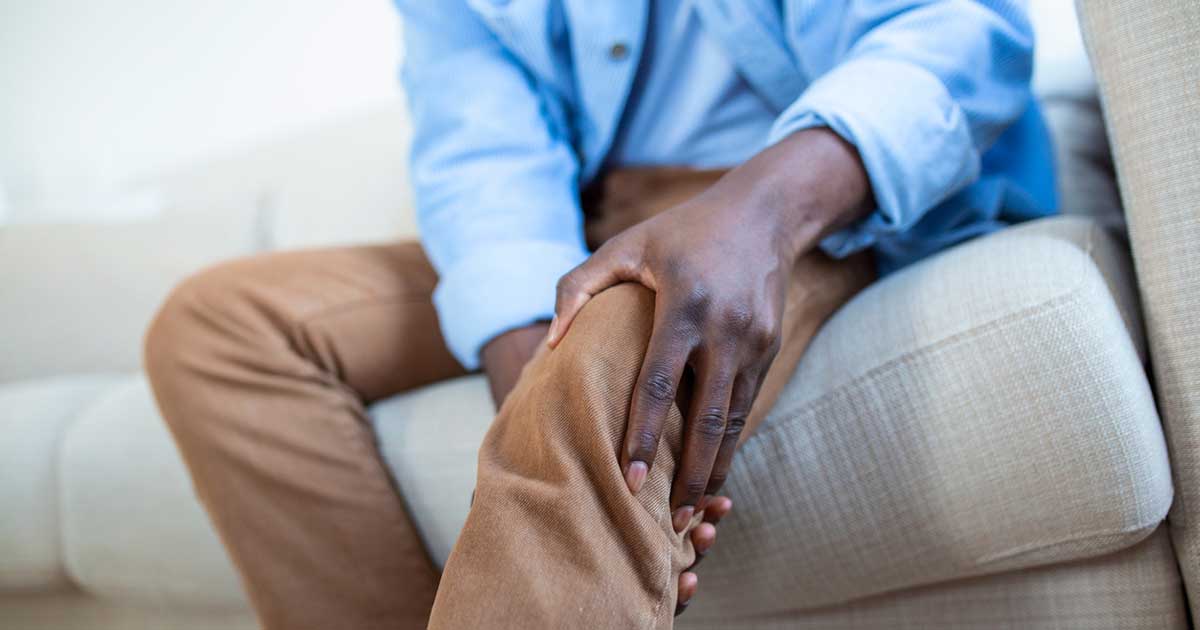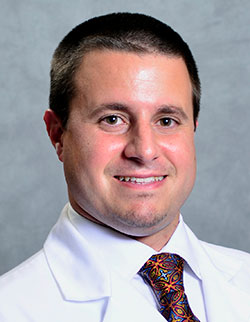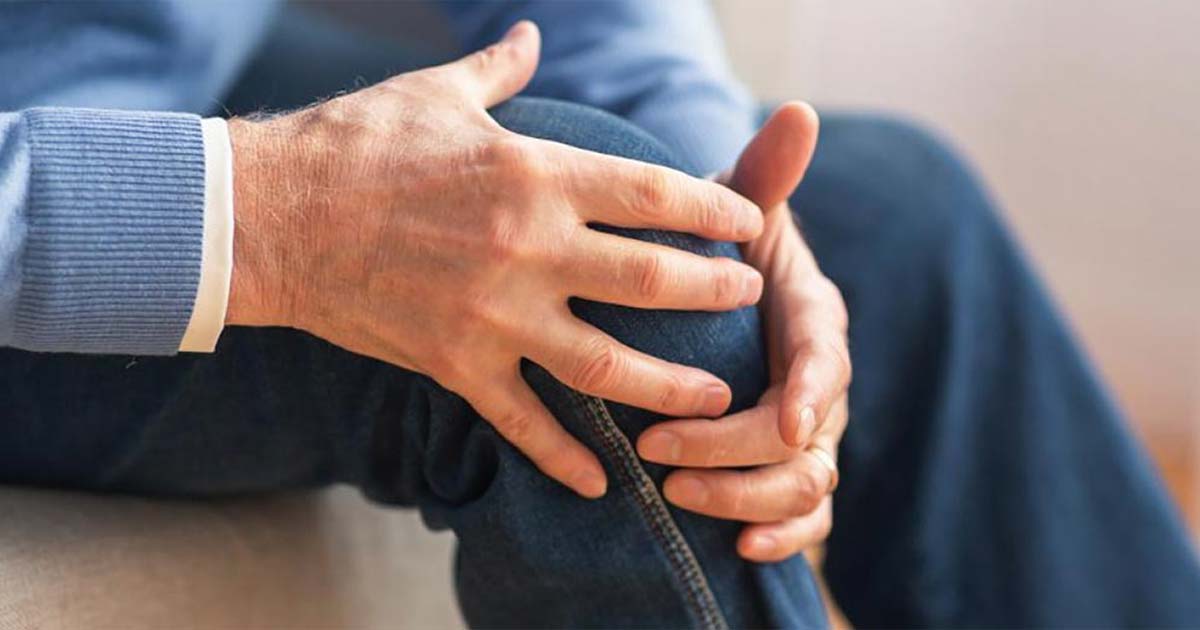What Is Post Traumatic Arthritis? Exercises, Causes and More
Advice to improve your movement, fitness, and overall health from the world's #1 in orthopedics.
Developing osteoarthritis (OA) after a traumatic injury such as an ankle sprain or a torn ligament is very common, says James Wyss, MD, PT, a sports physiatrist at HSS. If you’ve had a joint injury in the past and are concerned about developing OA, here’s what to know.

How Common Is Post Traumatic Arthritis?
Take the anterior cruciate ligament (ACL) in the knee, for example. Within 10 years of tearing the ACL and having it rebuilt with reconstructive surgery, about 25% of people will have some symptoms of osteoarthritis. By 15 years, it’s closer to 50%. Developing osteoarthritis is one of the “unsolved problems” of ACL surgery, says Scott Rodeo, MD, a sports medicine orthopedic surgeon at HSS.
“ACL reconstruction can reliably stabilize the knee and potentially prevent further injury,” he notes. But what happens after surgery—including physical therapy, exercise, lifestyle factors, work and more—all impact that joint’s future strength, movement and stability.
There’s less data on other types of joint injuries—including shoulder dislocation, kneecap dislocation and recurrent ankle sprains—but in general, the more unstable a joint is, the more likely it is to cause problems in the future.
Symptoms of Post Traumatic Arthritis
The most common symptom of osteoarthritis in any joint is pain, which may increase during activity and decrease with rest. The second most common symptom is stiffness, which often occurs after long periods of inactivity.
You don’t have to wait for symptoms to become unbearable to seek treatment. In fact, the sooner you bring them to the attention of your healthcare team, the more likely it may be that you can feel better without surgery.
Diagnosing Post Traumatic Arthritis
As mentioned, it’s important to seek treatment even at the early signs of an issue. Your physician and/or physical therapist will likely begin by reviewing your medical history. Be as honest and thorough as you can. Every bit of detail can help them better help you.
If an injury happened when you were young, you may not remember much, which is OK too. That’s why your clinical team will order physical tests and imaging such as ultrasounds, X-rays, MRIs, and the like. These can help them see what you’re working with today. And if you have old test results in your file, it allows them to see what has changed over time.
Next, your team will assess your strength, stability, muscle endurance, flexibility and balance, as well as something called proprioception, which is your awareness of the position and motion of the parts of your body. These assessments will help them (and you) decide on the best next step for you.
It’s also important to let your team know what you’re doing on a daily basis, says HSS physical therapist Anna Ribaudo, PT, DPT, OCS, Capp-OB. “Are you sitting at a desk all day? What’s your posture like? Are you actually compromising your shoulder by lack of neck motion, if you have shoulder OA, for example?” Sometimes little lifestyle modifications can make a big difference.
Your team also wants to know what you would like to be able to do if you didn’t have pain or stiffness. If you want to return to walking your dog, that requires a different game plan than if you’re looking to return to competitive sports.
Surgical and Nonsurgical Treatments for Post Traumatic Arthritis
If you’re diagnosed with OA, whether you might need surgery later depends upon many factors, including:
- Health history
- Physical exam results
- Imaging studies (X-rays, MRIs, CT scans, ultrasounds) and other tests
- Your goals for activity
Typically, though, nonsurgical approaches will be tried first—and often they can be enough to bring you years of relief. These methods are the same regardless of whether or not OA developed as the result of an injury. Many of these strategies will be familiar if you did rehab after your injury, since they’re probably the same things you did during recovery. Here’s the order in which they’re often used:
- Activity modification (such as adapting your tennis serve or switching to a lower-impact cardio activity)
- Oral medicines, such as nonsteroidal anti-inflammatory drugs (ibuprofen, naproxen and celecoxib) and others
- Physical therapy
- Injections (such as hyaluronic acid injections, sometimes called “gel shots,” which are now used more often than corticosteroids, in some cases)
- Bracing (ideally, customized devices that fit you to a T)
Dr. Rodeo notes that surgery may be recommended as the primary option if your doctor thinks it’s your best bet for a good outcome. “Our challenge as surgeons,” he says, “is trying to identify those patients at higher risk [for a second injury to that joint].”
Often that includes younger patients, those who have stretched or slightly torn ligaments, and those involved in higher-level sports, especially activities that involve a lot of quick stops and changes of direction, such as soccer or martial arts.
Exercises for Post Traumatic Arthritis
While it may not be possible to prevent the development of OA after an injury, there are steps you can take to lower your risk.
Focus on what you can control. “Some things we can change. Some things we can’t change,” says Dr. Rodeo. “I tell patients the factors under their control are, number one, maintaining the ideal body weight and, number two, strengthening.” Eating right can not only help you to maintain a healthy body weight and muscle-to-fat ratio, but it can also help ease inflammation related to arthritis.
Build strength above and below the joint. Often, we lose muscle tone and strength as we age. When you strengthen the muscles around a joint, you provide it with extra support and mobility, which can ease pain and stiffness.
Follow instructions on what to work on first. When the knee or ankle are affected, it’s important to build strength before mobility (motion). These injuries, says Ribaudo, can leave you unsteady, which can be dangerous if you try to get back to running too soon, for instance.
On the other hand, if your shoulder is affected, your team will likely suggest you improve your range of motion before you start building strength. Adding weight while the joint is loose can do more harm than good, but moving the joint eases stiffness and pain—and sets the stage for strengthening exercises.
Keep doing your exercises (or start doing them again). One of the biggest problems for many people, says Ribaudo, is that as soon as their symptoms ease up, they stop doing the things that helped them feel better. If that sounds familiar, talk to your team about getting back on track. This may mean restarting the program you were given after the original injury. Or it may mean asking for ways to get back to or modify your favorite workouts today.
Know your limits. Finally, ask your team if there are some things you probably won’t be able to push past—and find ways to get the results you want, safely.
“If healthcare providers take the time to explain the condition, explain where their limitations are and what they can improve—like strength, posture—I think you can end up with a favorable outcome,” says Dr. Wyss.
Want to learn more? Watch a webinar with the experts in this article as well as physical therapist Anil Nandkumar, PT, DPT, CSCS, SFMA.






